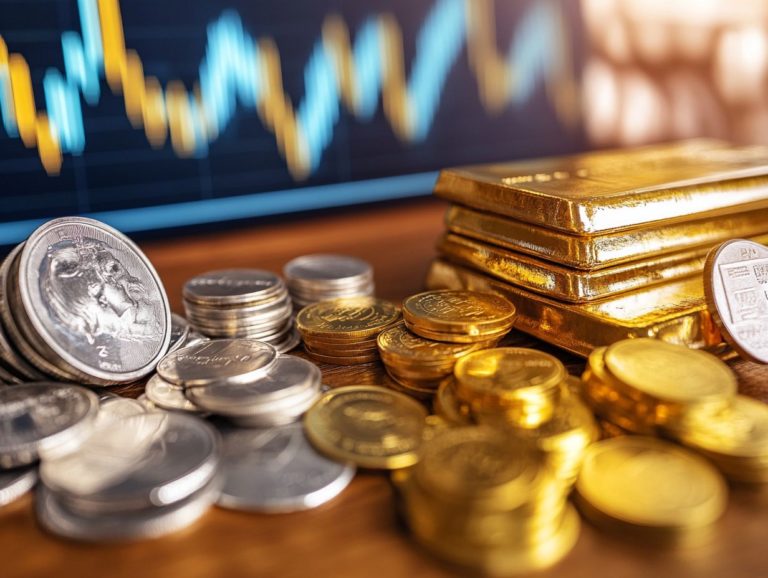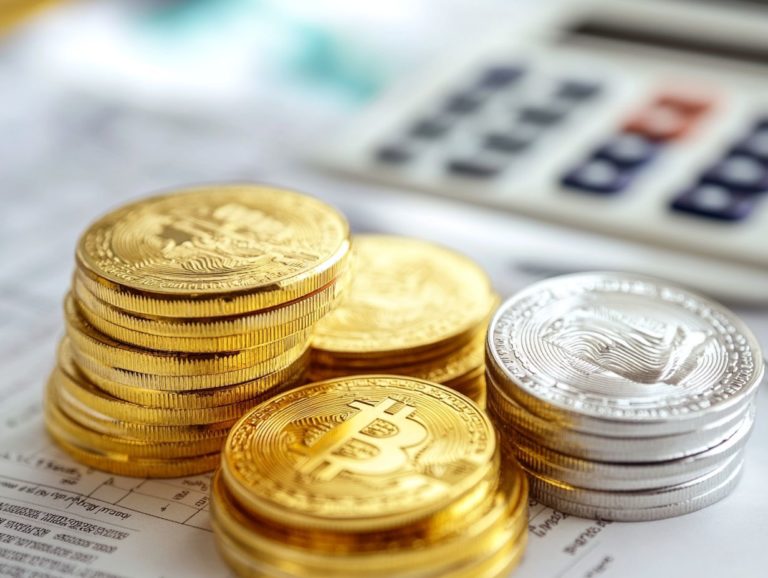5 Reasons Silver is the Future of Investments
Silver has become an essential asset in today’s economy, seamlessly combining industrial utility, investment potential, and affordability. As a finite resource, its value is enhanced by strong demand across multiple sectors, making it a great option for discerning investors like you.
Let s explore five exciting reasons why silver can boost your investments! From its historical performance to its function as a hedge against inflation, discover how silver could significantly influence your financial future.
Contents
- Key Takeaways:
- 1. Silver Has a Wide Range of Industrial Uses
- 2. Silver Is a Limited Resource
- 3. Silver Has a High Demand for Investment Purposes
- 4. Silver Is More Affordable Than Gold
- 5. Silver Has a History of Outperforming Other Investments
- What Is the Current State of the Silver Market?
- Frequently Asked Questions
Key Takeaways:
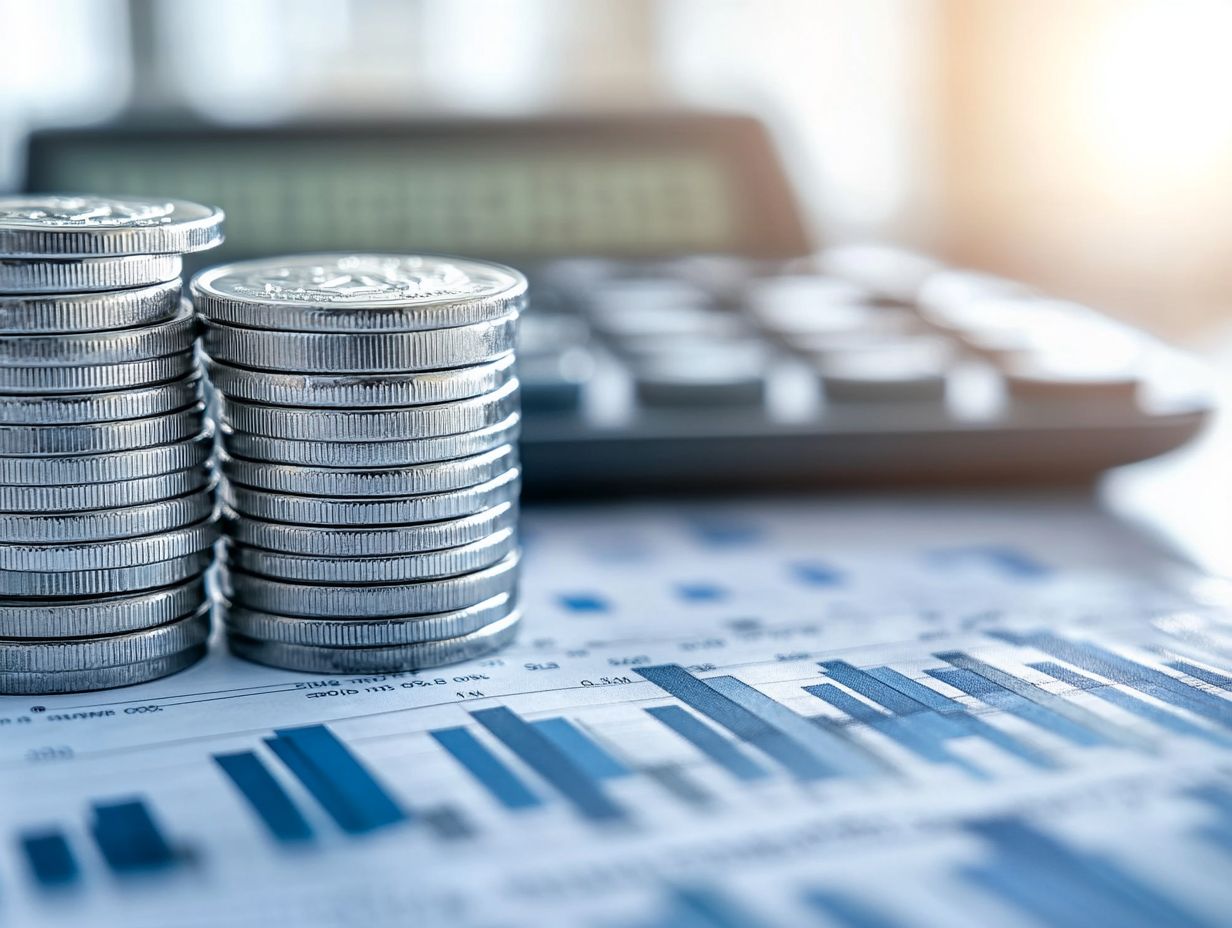
- Silver has a wide range of uses in various industries, making it a stable and valuable investment choice.
- As a limited resource, the demand for silver is expected to continue rising, driving its investment value.
- Compared to gold, silver is a more affordable and accessible investment option for those looking to diversify their portfolio.
1. Silver Has a Wide Range of Industrial Uses
Silver is a remarkably versatile metal with many industrial applications. It is essential in sectors like automotive, solar energy, and electronics. This versatility fuels its rising demand and value.
In the automotive industry, silver plays a key role due to its high conductivity. It is often used in critical applications like electrical contacts and sensor technologies, enhancing vehicle performance and safety.
Silver is also crucial for solar panels. Its unique properties facilitate efficient energy conversion, supporting the shift toward sustainable solutions.
As technology advances, silver’s significance in electronics especially in smartphones and computers underscores its vital contribution to innovations shaping contemporary life.
2. Silver Is a Limited Resource
Act now! Silver is a rare resource, and its market demand is skyrocketing. The scarcity of silver creates urgency, particularly as industrial demand climbs against finite supply and geopolitical tensions.
The geographical distribution of silver deposits is uneven, primarily found in Mexico, Peru, and China. Political instability or regulatory changes in these regions can unpredictably impact availability and pricing dynamics.
Investors are becoming increasingly aware of the delicate balance between supply constraints and geopolitical factors that can trigger price volatility.
Embracing sustainable mining practices is essential. Ignoring environmental concerns could deter future investments and hinder the industry’s ability to meet growing demand.
3. Silver Has a High Demand for Investment Purposes
Silver is now a sought-after investment, especially as you diversify your portfolio and hedge against economic uncertainty, inflation, and market volatility. Exploring unique ways to invest in precious metals positions silver as a strong asset in your financial strategy.
You can acquire this versatile metal in various forms, including coins, bars, and exchange-traded funds (ETFs). Each option has unique advantages that cater to your investment style and risk tolerance.
- Silver coins and bars provide tangible assets.
- ETFs offer convenience and liquidity for quick buying and selling.
As market conditions shift, factors like rising inflation and fluctuating interest rates can significantly impact your decision to invest in silver, often leading you to see it as a stable haven during uncertain times.
4. Silver Is More Affordable Than Gold
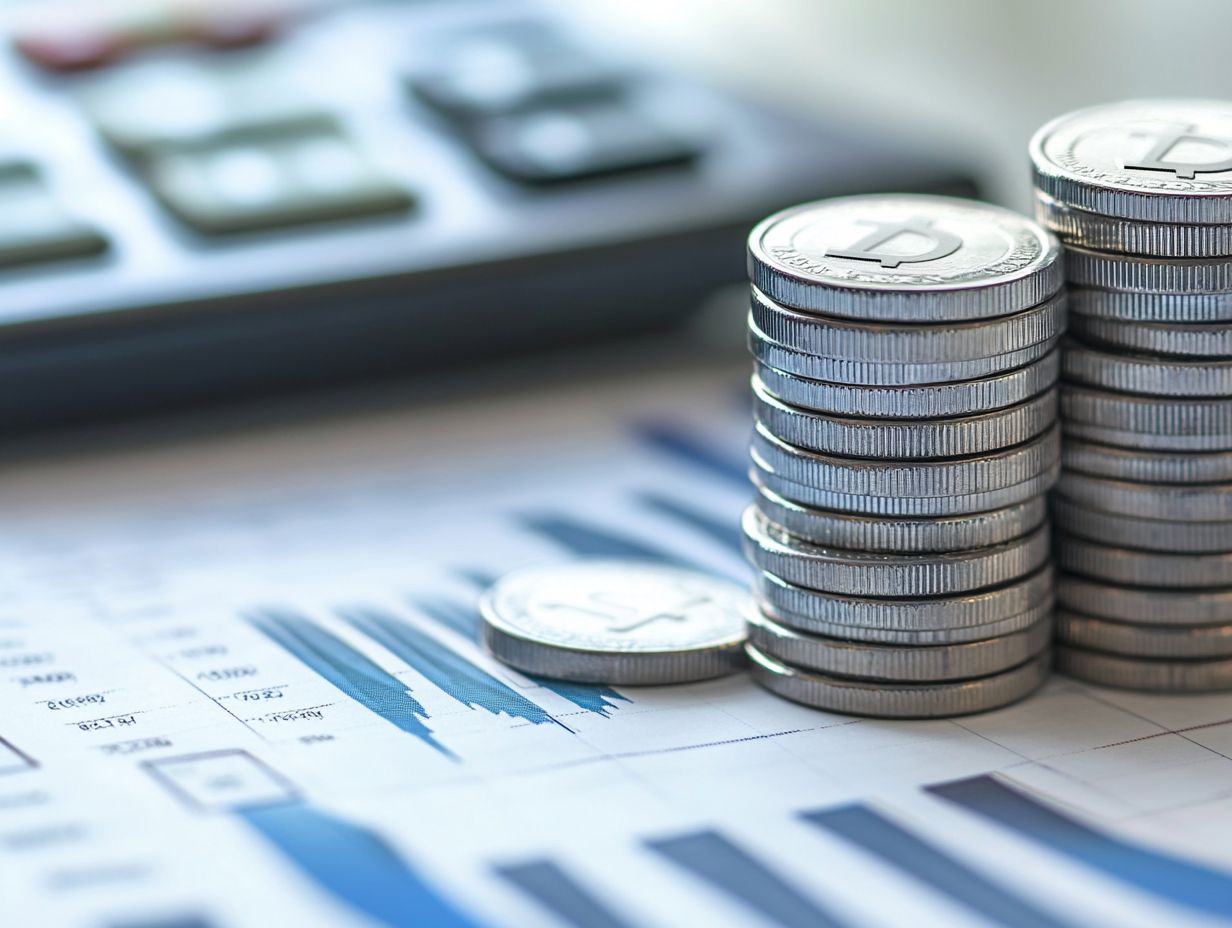
Silver is often seen as a more accessible alternative to gold. This makes it appealing to a wider range of investors who want to build wealth and diversify their investment strategies without the hefty price tag associated with gold.
For many newcomers to investing, this affordability opens the door to the precious metals market without stretching their budgets too thin. While gold may offer stability and long-term value, silver’s lower price means you can buy more of it, increasing your chances of benefiting from price appreciation.
With global demand for silver in industrial applications rising, investing in this metal serves as both a safeguard against inflation and a smart choice for those starting their investment journey.
This dynamic nature of silver attracts new investors and cements its role as a key element in a well-rounded investment portfolio.
5. Silver Has a History of Outperforming Other Investments
Historically, silver has shown a remarkable ability to outperform other investments through various market cycles. This highlights its potential as a reliable store of value and a strategic asset for preserving wealth, much like buying gold coins over bullion.
As both an industrial metal and a precious commodity, silver tends to excel during economic turmoil. For instance, during the 2008 financial crisis, it experienced a significant rally as investors sought a safe haven from volatile markets.
During the high inflation of the 1970s, silver prices soared, showcasing its effectiveness as a means to protect against rising costs.
In today’s landscape, uncertainties around the global economy, rising interest rates, and geopolitical tensions make these historical trends valuable for investors.
By incorporating silver into your portfolio, you can counteract inflation and position yourself for potentially lucrative gains in the future. Don t miss out on this opportunity!
What Is the Current State of the Silver Market?
The current silver market presents a fascinating mix of rising prices, shifting demand, and evolving investor sentiment as we approach the end of 2023 and look into 2024.
Economic indicators and geopolitical events create a complex landscape. Recent trends show a notable increase in silver prices, largely driven by heightened industrial demand and a growing interest from investors seeking safe-haven assets amid global uncertainties.
Central bank policies especially regarding interest rates and inflation play a crucial role in shaping these market dynamics. With inflation rates remaining stubbornly high, many investors are becoming cautious and are often turning to silver to protect their money from losing value due to rising prices.
The global economic climate, marked by supply chain disruptions and geopolitical tensions, adds to the market’s volatility, prompting many to reevaluate their investment strategies.
What Factors Affect the Price of Silver?
Several factors influence the price of silver that you should pay attention to. Supply and demand dynamics, economic indicators like inflation, and broader market cycles shape investor sentiment and trading patterns.
Industrial demand is a significant influence; silver is essential in electronics, photovoltaics, and medical applications. As this demand grows, you may notice fluctuations in availability, which can amplify price changes.
Investment demand, especially during economic uncertainty, nudges traders toward silver as a safe haven asset, creating a complex interplay between industrial and investment needs.
Macroeconomic indicators such as interest rates and currency strength send ripples through the silver market. By assessing economic health through these indicators, your investment strategies might shift, impacting overall silver prices and market trends.
Explore more about investing in silver to take advantage of current market conditions!
What Are the Different Ways to Invest in Silver?
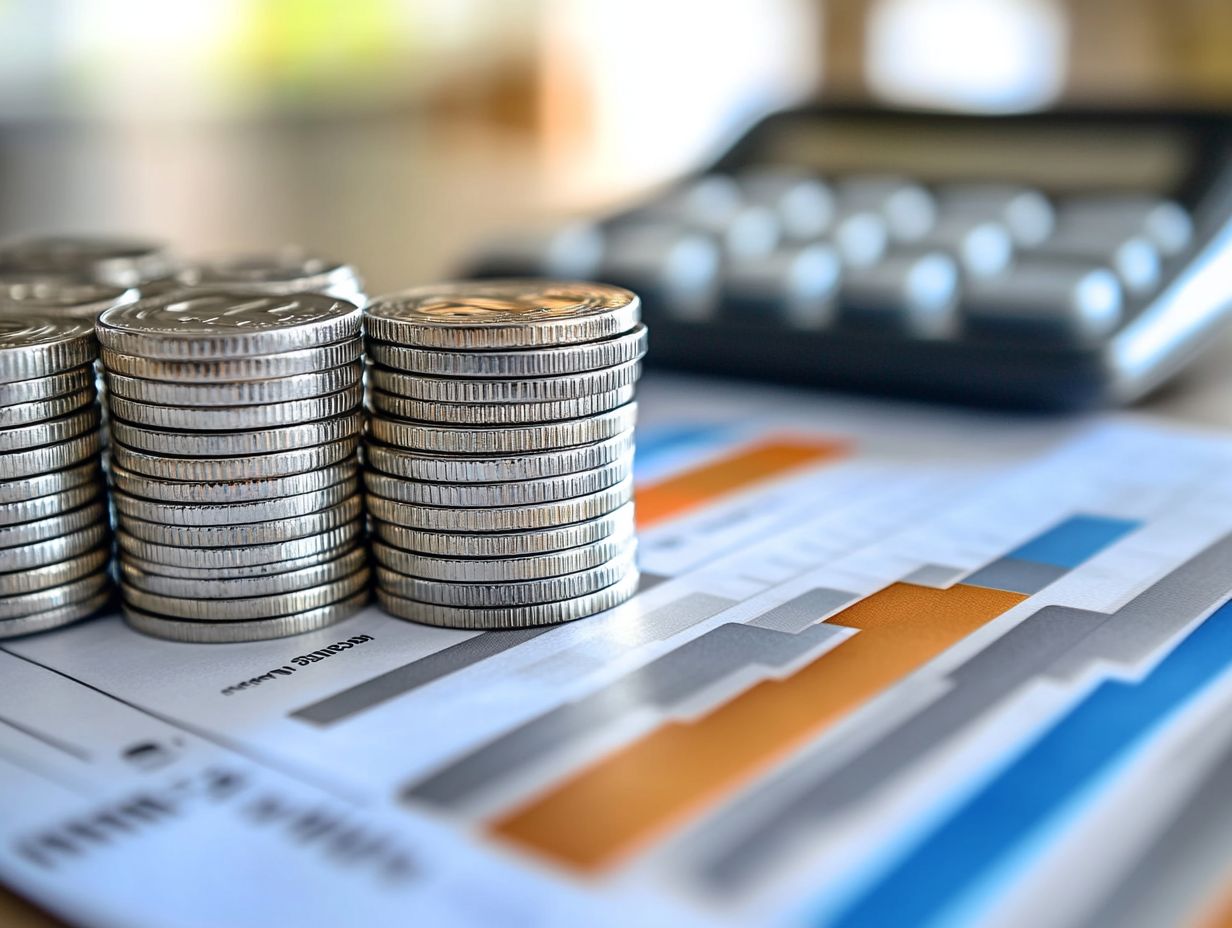
You have a range of methods at your disposal for investing in silver, from tangible assets like coins and bars to financial products such as exchange-traded funds (ETFs). Each option presents its own unique benefits, allowing you to align your choices with your specific investment strategy.
If you value tangible assets, holding physical silver offers a sense of security. It acts as a hedge against market volatility. If you prefer liquidity and convenience, ETFs offer quicker access to your funds and allow for diversification without the hassle of storage.
For those drawn to the potential for significant returns, mining stocks may pique your interest. However, be aware that they come with inherent risks tied to the mining sector. Ultimately, the method you choose should reflect your individual financial goals, risk tolerance, and desired level of involvement in the investment process. This enables you to tailor your strategy effectively.
How Can Silver Be Used as a Hedge Against Inflation?
Silver acts as strong protection against inflation, preserving wealth for those who seek stability during times of rising prices and economic uncertainty.
Historically, silver has shown its remarkable ability to hold value when currencies depreciate. Striking examples include the hyperinflation of Weimar Germany and the recent economic turmoil in Venezuela.
Data from the World Bank reveals that during the inflation surge of the 1970s in the United States, silver prices skyrocketed by over 40%.
If you’re considering adding silver to your investment portfolio, you can allocate a portion of your assets to physical silver, such as coins and bars, or tap into exchange-traded funds (ETFs) that track silver s performance. This approach complements traditional investments like stocks and bonds, helping you create a diversified portfolio that’s better equipped to weather the impacts of inflation.
What Are the Potential Risks of Investing in Silver?
Investing in silver certainly opens the door to a range of opportunities, but it also carries potential risks tied to market volatility, economic upheaval, and the unpredictable nature of commodity prices.
Many factors can affect price fluctuations, keeping you on your toes. Geopolitical tensions, shifts in demand, and changes in the global economic landscape can all impact silver s value. Market cycles can dramatically influence its worth, making it crucial for you to stay vigilant.
To successfully navigate these challenges, it s advisable to conduct thorough research to grasp market trends. Consider diversifying your investment portfolio to minimize exposure to any single investment. This approach safeguards your overall financial health and maximizes your potential for long-term gains.
What Are the Predictions for the Future of Silver Investments?
Predictions for silver investments in 2024 suggest a potentially bullish outlook, fueled by rising industrial demand, inflationary pressures, and shifting market trends that underscore silver’s value as a crucial asset in investment portfolios.
You should consider that emerging technologies especially in renewable energy and electronics are likely to significantly enhance silver s demand. Its remarkable conductive properties make it critical for a wide range of applications.
In this current economic landscape, where inflation rates are climbing and recession fears loom, now is the time to consider silver for your investment portfolio! You might find yourself gravitating towards safe-haven assets, which could drive silver prices even higher.
Geopolitical tensions could also influence the market; disruptions in silver-producing regions might tighten supply. Together, these elements create a multifaceted landscape that deserves your careful consideration if you’re thinking about silver as a strategic investment for the upcoming year.
Frequently Asked Questions
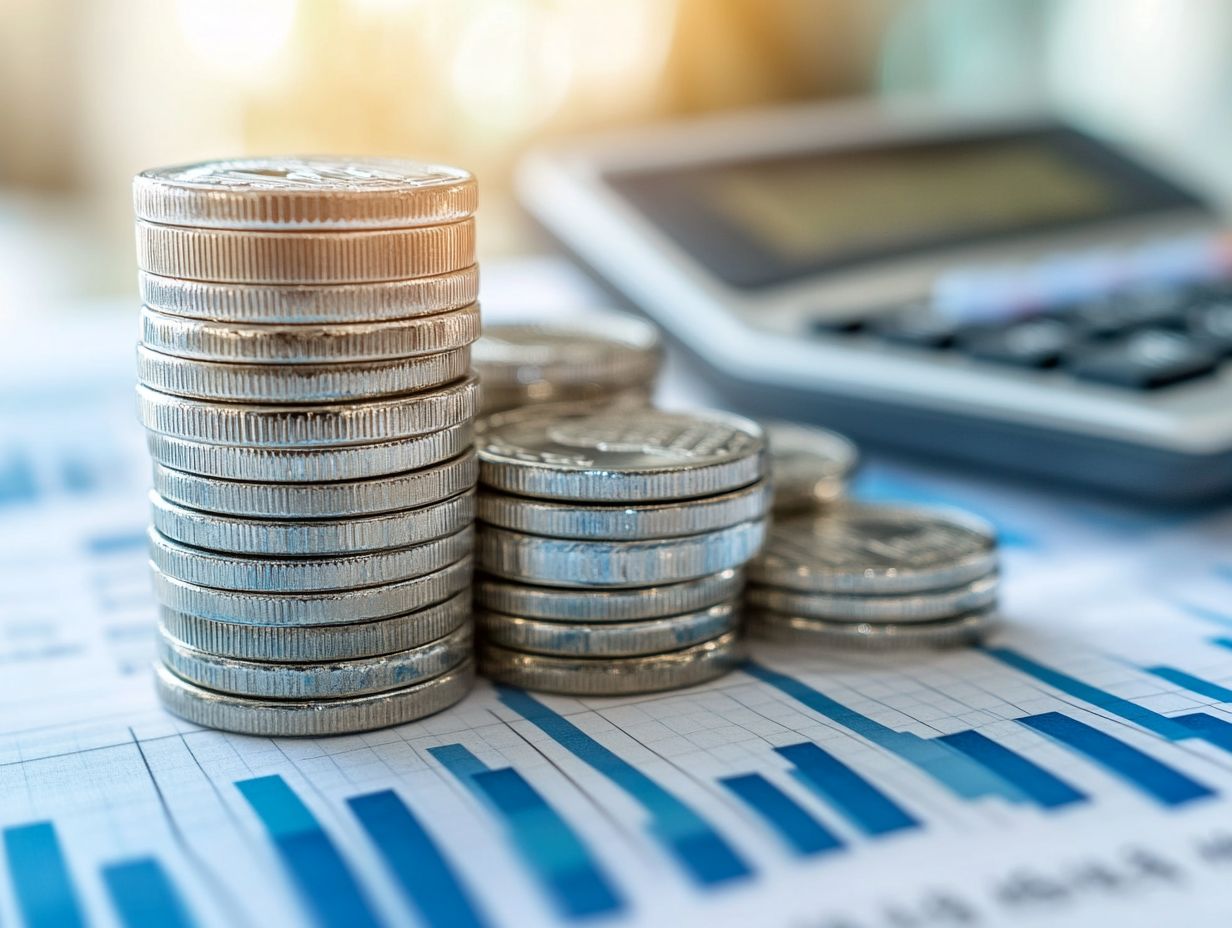
If you’re looking to explore silver investment opportunities further, consider consulting with a financial advisor. Take the next step in securing your financial future!
What are the top 5 reasons silver is the future of investments?
1. Historical Performance: Silver has shown strong returns over time, making it a reliable investment option. For those looking to invest wisely, exploring the top 5 silver coins for investment in 2024 can be beneficial.
2. Industrial Demand: Silver is used in many industries, including technology and renewable energy. This creates steady demand for the metal.
3. Limited Supply: Silver is a finite resource. As the supply decreases, its value can increase.
4. Inflation Protection: Silver helps protect your money from losing value due to rising prices.
5. Portfolio Diversification: Investing in silver can diversify risk and provides stability during market fluctuations.
How does silver compare to other investment options?
Silver has unique advantages over other investments. It is accessible to many investors and tends to be more stable than other commodities, especially in light of the trends shaping the future of precious metals.
What are the potential drawbacks of investing in silver?
Investing in silver does come with risks. Prices can fluctuate, and there s a chance of fraud or counterfeit products, so buy from trustworthy sources.
How can I invest in silver?
There are several ways to invest in silver. You can buy physical bullion, purchase shares in mining companies, or invest in silver ETFs. Dive into your options and discover the best ways to invest!
Is silver a sustainable investment option?
Yes, silver is a sustainable choice. It s a precious metal that can be recycled, making it more eco-friendly than other commodities. The growing demand for silver in renewable energy and technology makes it a smart investment.
Can I make short-term investments in silver?
While silver can be profitable in the short term, it is often viewed as a long-term investment. Consider your goals and risk tolerance carefully before making short-term moves in silver!

